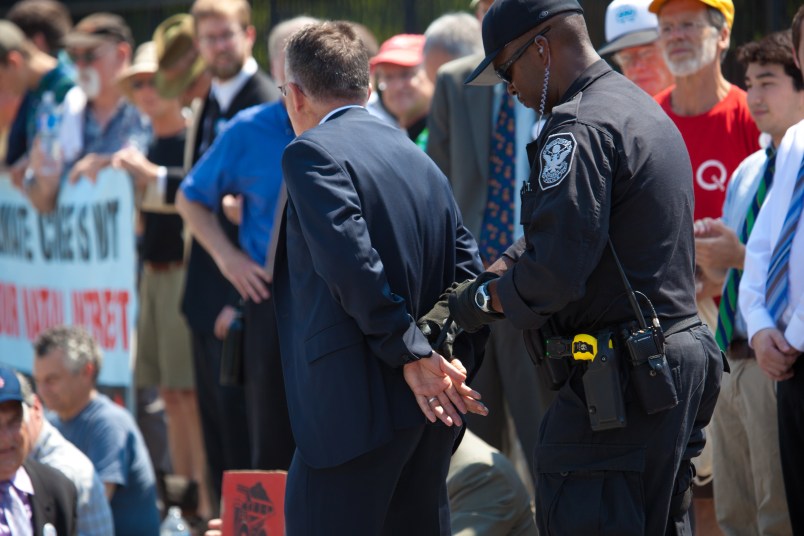For six days and counting now, hundreds of protesters have gathered outside the White House to demand President Obama intervene and stop the construction of an oil pipeline that will span the breadth of the United States — from Montana to the Gulf of Mexico. Over 300 of them have been arrested — and not just wild-eyed idealistic college students, but high-profile advocates including environmental leader Bill McKibben. Despite all this, the administration says this is a question for Secretary of State Hillary Clinton.
What the heck is this all about?
At issue isn’t just NIMBYism or standard concerns about oil spills, but the question of whether the United States should accelerate an extraction process that some environmental experts say will lose the fight against global warming forever.
The oil in question comes from the Canadian oil sands — or tar sands, as opponents refer to it. It’s not just regular oil, but highly corrosive and particularly carbon intensive. The process of extracting the oil from the sands is more energy intensive than drilling for crude. It entails destruction of Canada’s Boreal forest, which serves as a carbon sink, making this particular resource extraction a global warming double whammy.
And there’s tons of it — perhaps as much as 200 billion barrels-worth.
NASA climatologist James Hansen, who’s been sounding the climate change alarm for years, objects to the project particularly for this latter reason. “An overwhelming objection is that exploitation of tar sands would make it implausible to stabilize climate and avoid disastrous global climate impacts,” he wrote in June.
Canadians can do what they want with their oil in Canada, and there’s little American protesters can do to stop them. But the protesters don’t want to help them along in the process, and that’s why they’re fighting the Keystone XL pipeline construction, which also entails risk to U.S. land and water. And they make a good case. The existing Keystone XL line has leaked over and over again in its first year of operation.
For that reason, opposition to the construction is creating some strange bedfellows. Sen. Mike Johanns (R-NE) opposes the project, which threatens the Sandhill regions and the Ogallala aquifer, which provides drinking water to the vast majority of Nebraskans.
In a June letter, the EPA raised concerns both about the risk of spills, and the larger greenhouse gas problem. But the wheels here were set in motion under the Bush administration. Because the pipeline would cross an international border, the final say goes to the State Department, which is expected to weigh in on the environmental soundness of the project as early as Friday, and give a green or red light by the end of the year.
But activists won’t let President Obama get away with silently assenting to this project.
“The decision-making authority is solely the president’s,” Michael Brune, executive director of the Sierra Club, told other environmental groups on a Thursday conference call, according to Bloomberg. “It will be increasingly difficult to mobilize the environmental base and to mobilize in particular young people to volunteer, to knock on thousands of doors, to put in 16-hour days, to donate money when they don’t think the president is showing the courage to stand up to big polluters.”
This is one to keep an eye on.
Update: 1:38pm Eastern – The State Department has now released its final environmental impact statement for the proposed tar sands pipeline. The Natural Resources Defense Council distributed an email saying, “the final statement still lacks a number of in-depth safety and pollution studies, despite a claim from the Obama administration that the pipeline would have ‘no significant impacts.'”
Get the day’s best political analysis, news and reporting from the TPM team delivered to your inbox every day with DayBreaker. Sign up here, it takes just a few seconds.










